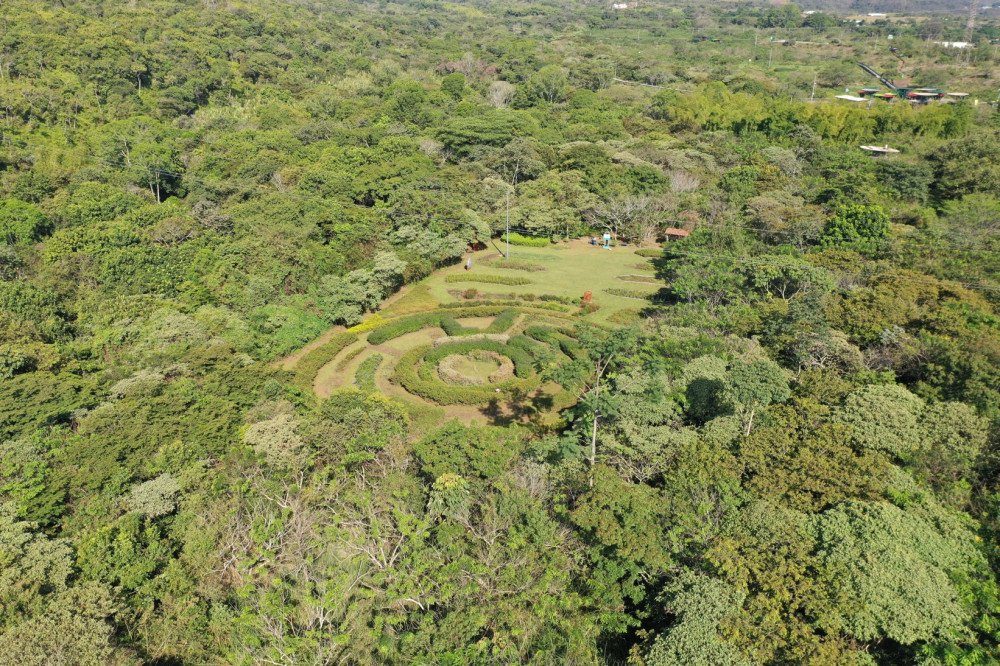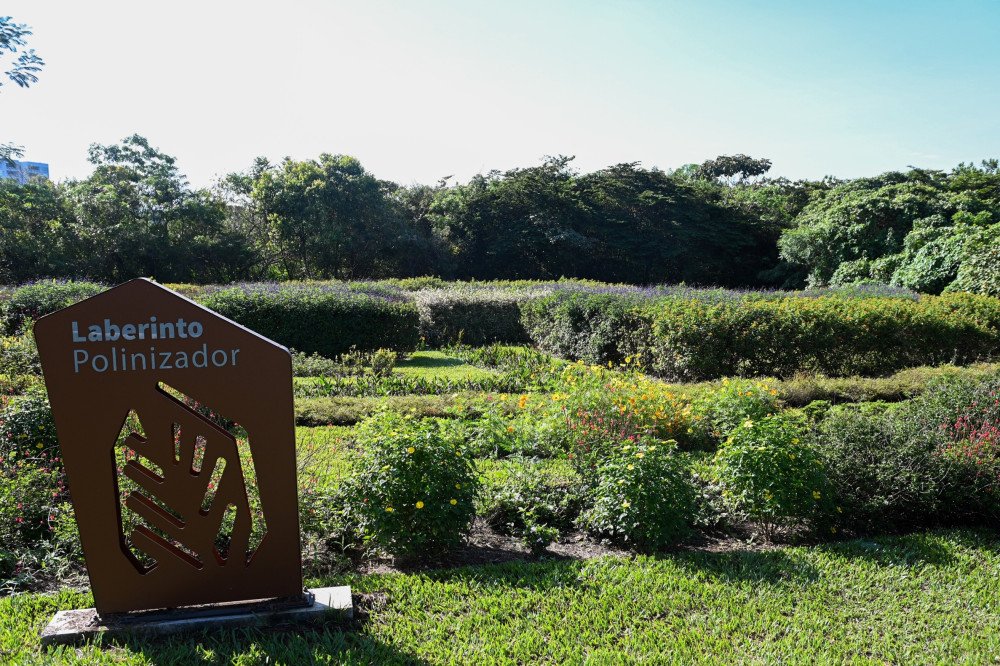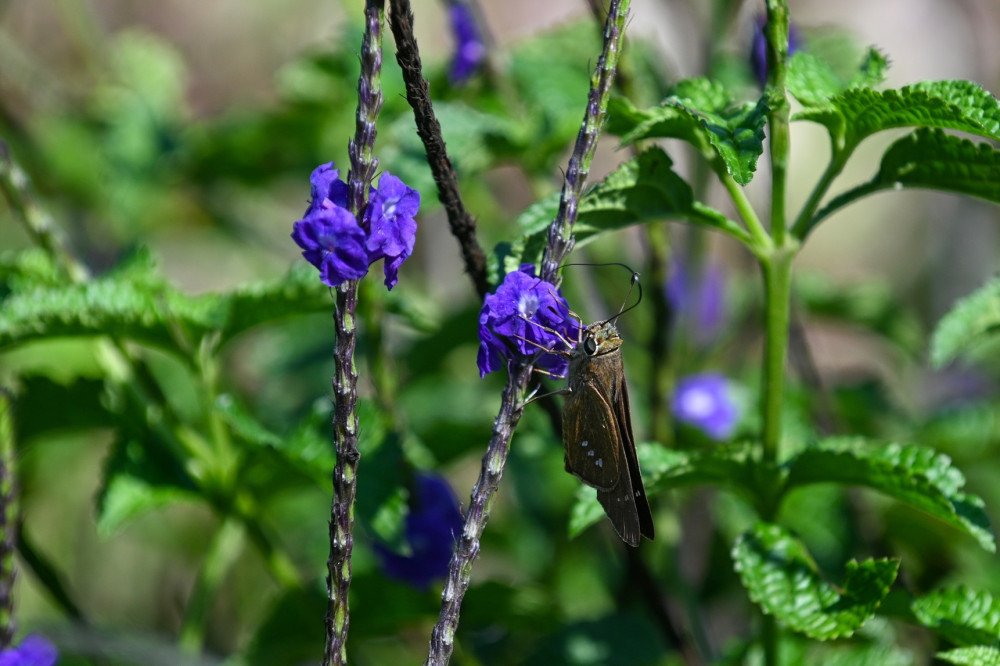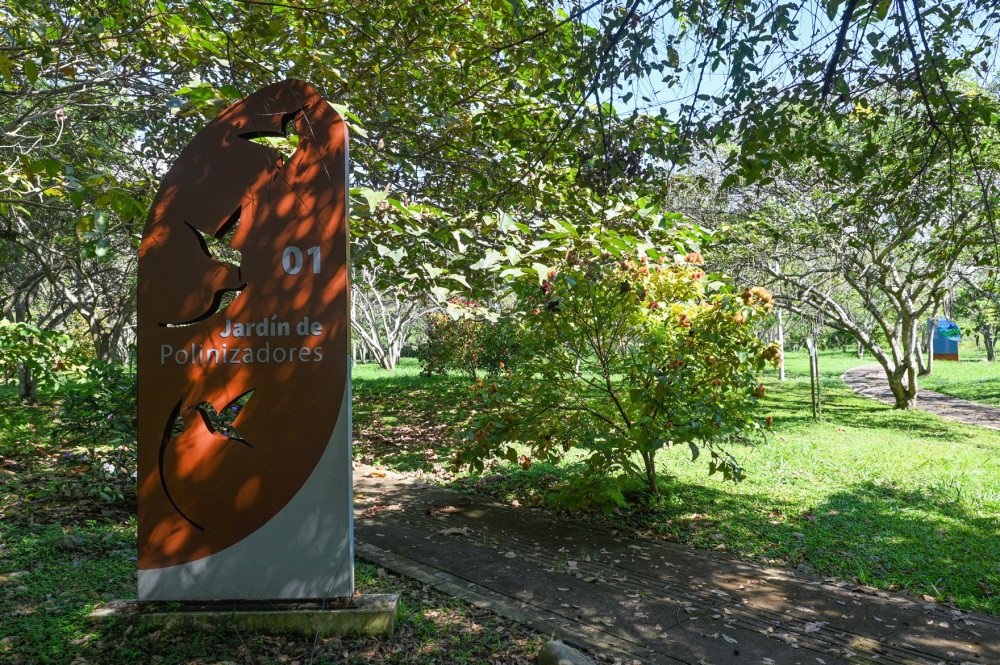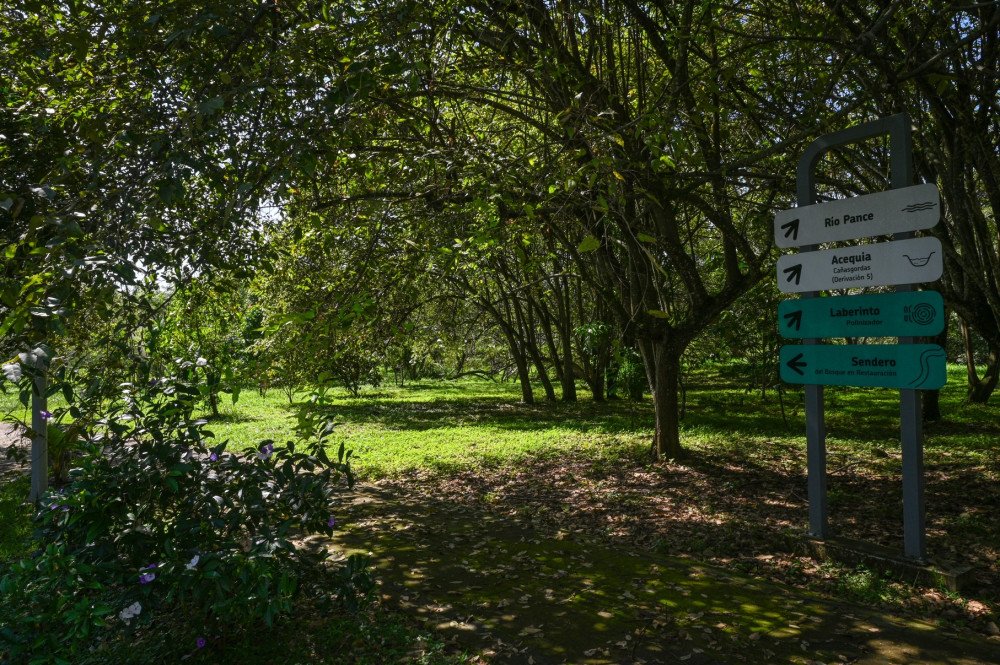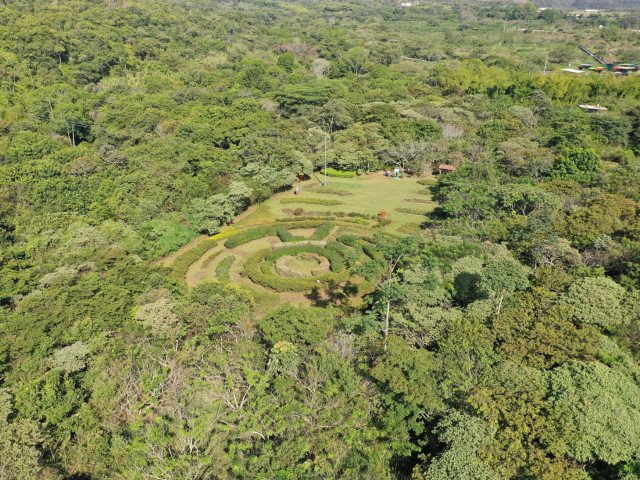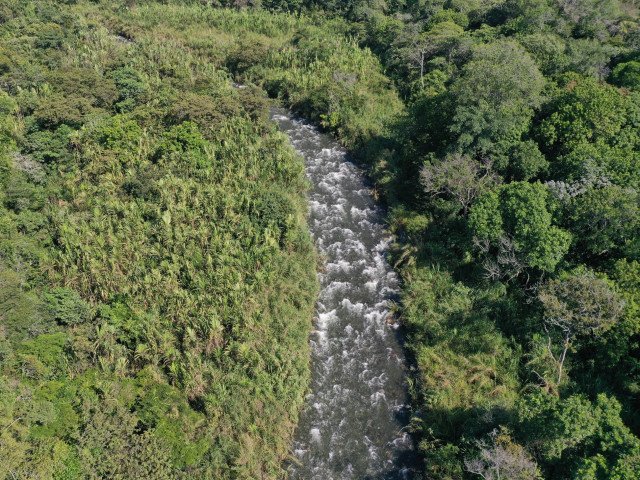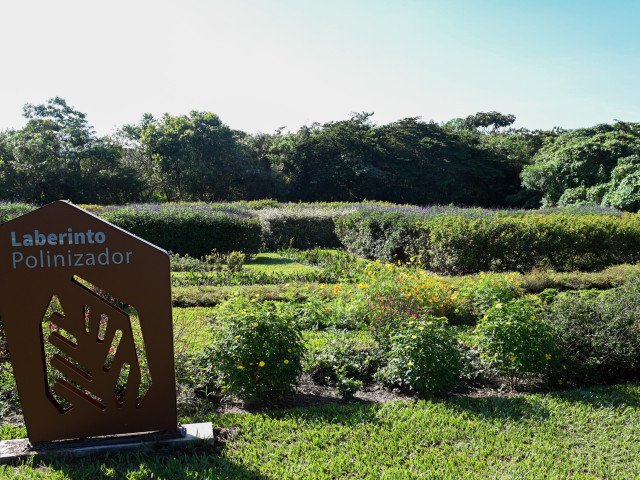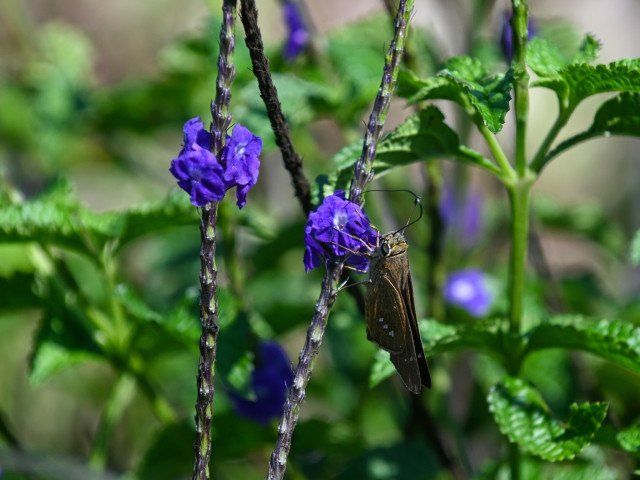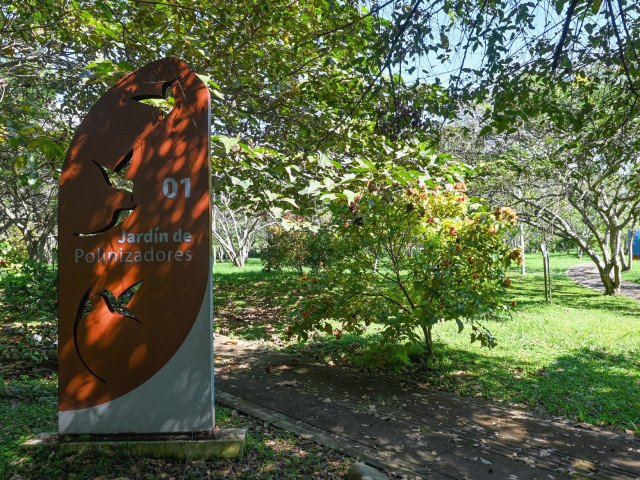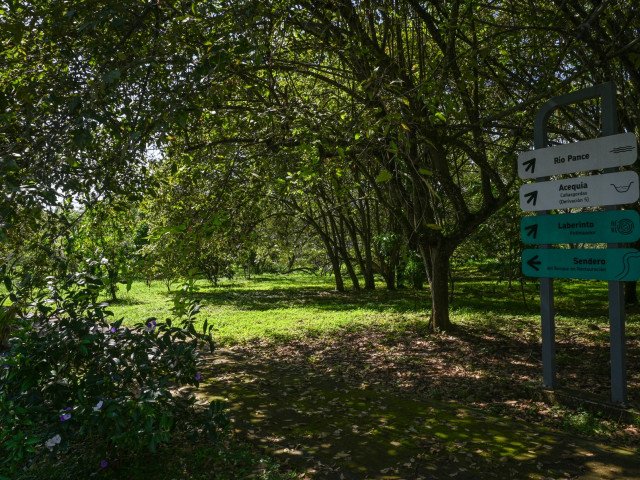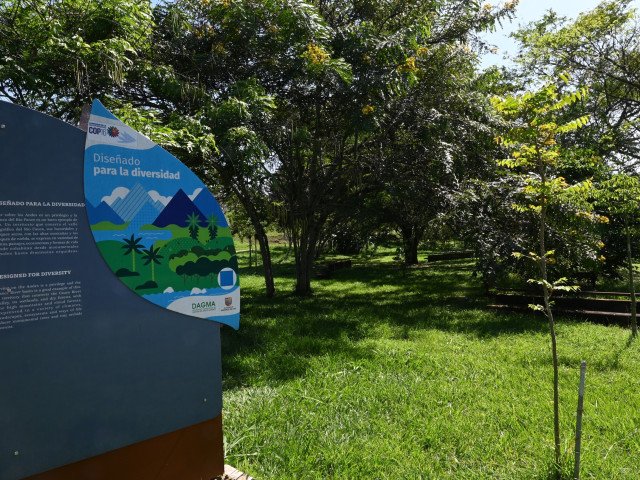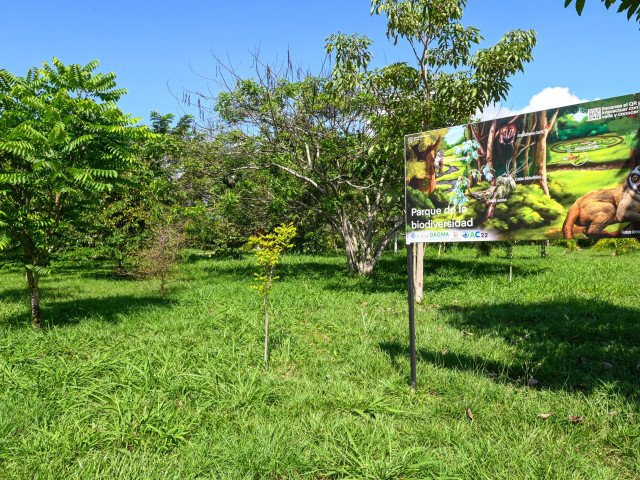The ecopark is a recreational area surrounded by nature located in the city of Cali, Colombia, with an extension of 920.000 square metres: a site dedicated to aggregation, protection of water resources and biodiversity. The park aims to become a place of reconciliation between human beings and their natural environment, according to principles of harmony, balance and respect, in accordance with the characteristics of the territory and its traditions.
The Biodiversity Ecopark COP16, located in the Pance river basin in the south of Santiago de Cali, is one of the most important environmental projects in the city. This space, promoted by DAGMA (Departamento Administrativo de Gestión del Medio Ambiente), is a strategy for ecological restoration and sustainability, which contributes to the recovery of ecosystem services and adaptation to climate change, while offering citizens a place to meet, learn and connect with nature.
With an extension of more than 90 hectares, the Biodiversity Ecopark COP16 is today a space dedicated to biodiversity conservation, environmental education and the sustainable use of natural resources, with a comprehensive, participatory and resilient approach. It brings together science, culture, wellbeing and recreation in a harmonious way, allowing visitors to experience the richness of the territory in a conscious and respectful manner.
The ecopark is not only a space for conservation and education, but also a place that promotes the wellbeing and mental health of those who visit it. With a sustainable design that prioritises the integration of nature into everyday life, the ecopark also has buildings with low environmental impact, renewable energy and responsible water management, making it a model of sustainability.
This ecopark is also a shelter for biodiversity. More than 350 species of plants, both arboreal and herbaceous, and around 340 species of birds are part of its ecosystem, making it a key site for wildlife observation and the strengthening of urban ecological corridors, where every corner of the park is designed to promote conservation and the sustainable enjoyment of nature.
The Biodiversity Ecopark COP16 is much more than a park: it's a living classroom, an ecological refuge in the middle of the urban landscape, and a symbol of Cali's commitment to life, environmental justice and the future. In a context of global climate crisis, this space reminds us that conserving, educating and living in harmony with nature is not only possible, but necessary.
Attraction and environmental connection spaces
The Biodiversity Ecopark COP16 has a wide variety of attractions and components integrated with the landscape, designed to promote passive enjoyment, learning, physical and emotional well-being, as well as strengthening the link with the natural environment. Among its main spaces, the following stand out:
- ecological trails: routes designed for nature walks, created to facilitate direct connection with the flora and fauna of the park. The trails allow you to explore the different environments of the ecopark, including forests, riverbanks and meadows, with opportunities for bird watching and native plant observation;
- wellness stations: spaces distributed throughout the park, designed for rest and relaxation. These stations are equipped with ecological furniture and are located in natural areas of special beauty, offering areas of shade and rest where visitors can enjoy the tranquillity of the surroundings;
- panoramic viewpoints: strategic points in the park that offer spectacular views of the surrounding landscape, from the majestic Cordillera Occidental to the Pance River. They are excellent for contemplation and nature photography, as well as being perfect places to take a break and reflect on the natural beauty of the region;
- “Pollinator Garden”: a site specifically designed to attract and support pollinator species essential to ecosystems, such as bees, butterflies and hummingbirds. This garden is home to a wide diversity of native and flowering plants that provide nectar and habitat for these important insects and birds, crucial to the reproduction of many plant species and the health of the ecosystem;
- linear gardens and green zones: spaces that integrate native species and adapted to the local climate, creating green corridors that not only beautify the park, but also promote biodiversity, pollination and water conservation. These areas are designed to encourage visitors to interact with nature in an educational and sustainable way;
- cultural and educational spaces: areas dedicated to the interpretation of the cultural and natural heritage of the region, with activities and workshops that promote respect for biodiversity. The park has an open-air theatre for cultural and educational events, as well as exhibition areas where you can learn about local ecosystems, climate change and the conservation of natural resources;
- environmental interpretation areas: spread throughout the park, these educational areas are designed to explain the natural processes, the existing species and the importance of ecosystem conservation. Visitors can learn about the flora and fauna of the region, the ecosystem services of the Pance River, and the conservation actions being carried out;
- entrance and welcome area: a space designed to provide visitors with information about the park, its rules and its history. In addition, in this space you can find a souvenir shop with handicraft products and memories of the visit, as well as information about the activities and events programmed.

